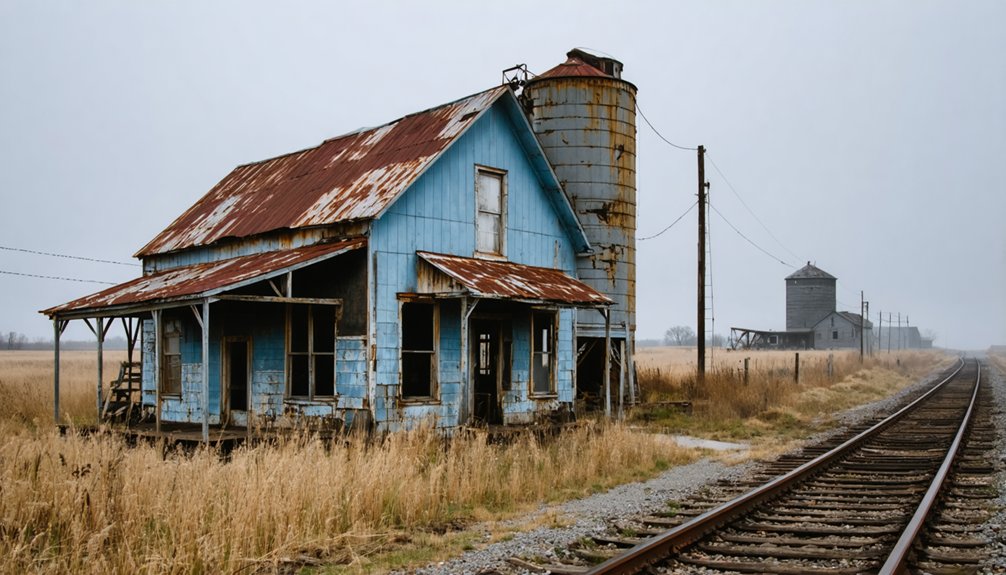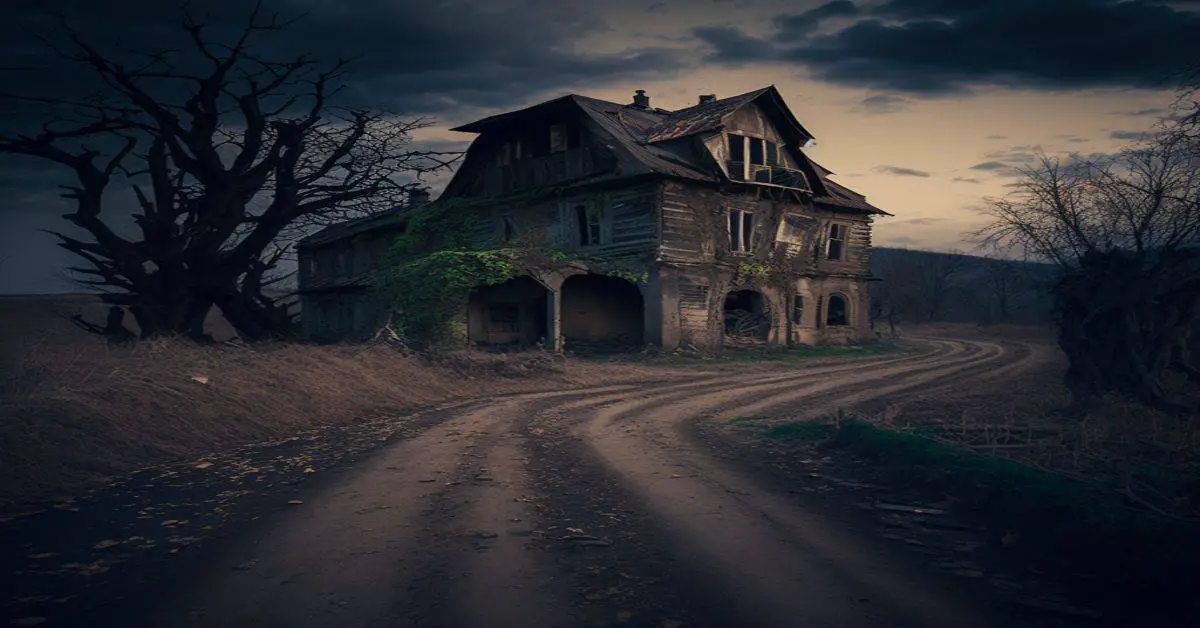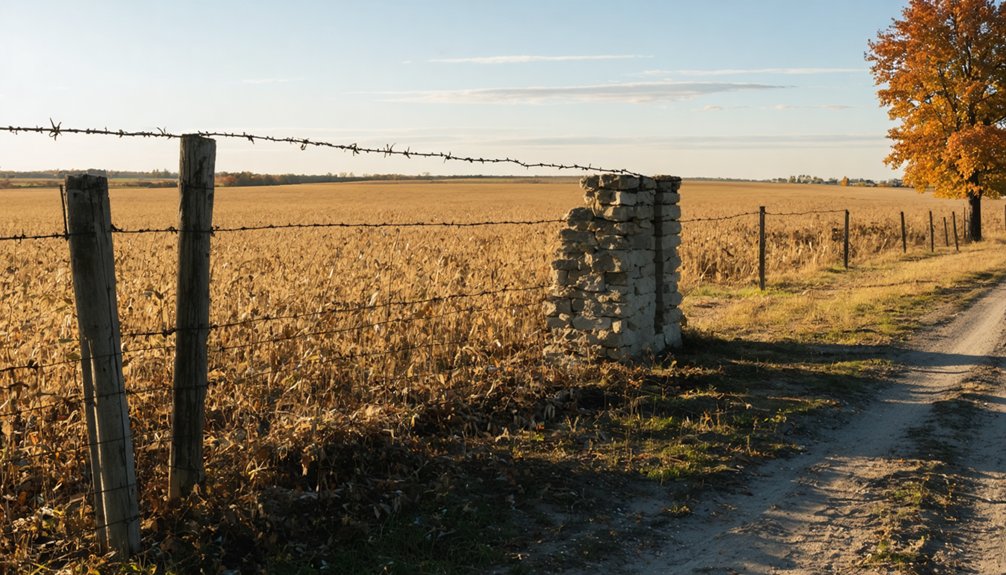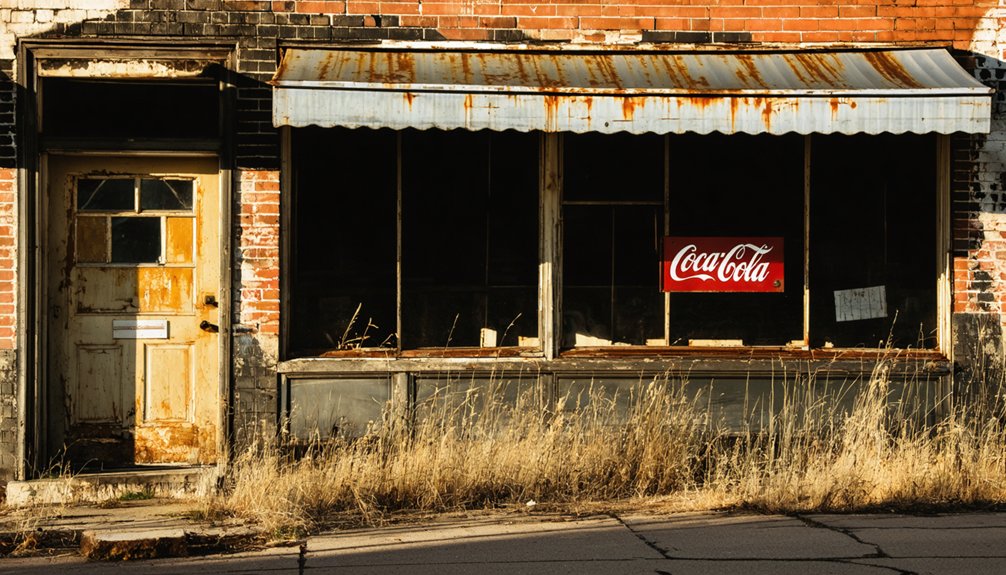You’ll find Stachnikville’s origins in Tazewell County’s 1856 coal boom, where an underground spring and rich coal deposits attracted miners and their families. The town flourished until 1873, supporting a diverse community of Welsh, Irish, German, and Swedish immigrants who worked demanding 10-12 hour shifts in dangerous conditions. By the late 1870s, the mining industry’s decline led to its abandonment, leaving only the Hillman Street Barn to tell its fascinating story.
Key Takeaways
- Stachnikville was established in 1856 as a coal mining town in Tazewell County, Illinois, following the discovery of coal deposits.
- The town experienced rapid growth during Illinois’ coal mining boom, reaching peak population in 1873.
- Daily life centered around dangerous coal mining work, with residents living in company housing and shopping at company stores.
- Economic decline began in the late 1870s due to failing coal industry, leading to mass exodus and complete abandonment.
- Only the Hillman Street Barn remains today, while the original townsite has been converted to agricultural land.
The Birth of a Coal Mining Settlement (1856)
As coal deposits were discovered in Tazewell County during the mid-19th century, Stachnikville emerged as a distinctive mining settlement in 1856.
You’ll find its origins deeply rooted in Illinois’ broader coal mining boom, when expanding railroad networks opened new possibilities for transporting coal to Chicago’s bustling markets. The early infrastructure centered solely on supporting mining operations and housing for workers who’d ventured far from home. An abundant underground spring attracted the initial development of the town.
The immigrant influence shaped Stachnikville’s character from the start, as Welsh, Irish, German, and Swedish miners flocked to the promise of steady work. The Coal Valley Mining Company formed that same year under the leadership of several prominent businessmen.
They built a close-knit community around the mines, sharing both the burdens of dangerous underground work and the hopes of economic prosperity. The town’s development mirrored many similar settlements that dotted Illinois’ northern coal fields during this transformative era.
Life in Early Stachnikville
Life in Stachnikville centered around the demanding schedules of coal mining, where you’d find workers rising before dawn and returning home covered in coal dust after long, grueling shifts.
You’d witness tight-knit families sharing modest company housing, with neighbors supporting each other through the daily challenges of mine work, poverty, and illness. The town eventually succumbed to economic hardships that made survival increasingly difficult.
The limited amenities and harsh conditions meant you’d often see community members gathering for mutual aid and companionship, creating strong social bonds that helped sustain the settlement through its early years. Like the town of Cardiff, devastating mine explosions claimed the lives of numerous workers in the early 1900s.
Mining Workers’ Daily Lives
While Illinois coal mining towns flourished in the late 1800s, Stachnikville’s miners endured grueling 10-12 hour workdays in dangerous underground conditions.
You’d find these brave workers traversing tight coal seams of 4.5 to 6 feet, using hand tools to extract coal while constantly watching for mining hazards like unstable roofs and poor ventilation. Miners relied on the room and pillar method to safely extract coal from the underground chambers.
Worker safety was often overlooked as you’d spend your days in specialized roles – cutting coal, loading carts, or maintaining wooden supports that could catch fire at any moment.
If you were lucky enough to avoid cave-ins, you’d still face the constant threat of respiratory illness from coal dust.
After your shift, you’d return to a modest company-owned house, where crowded, unsanitary conditions made rest and recovery difficult. Early miners were typically native-born settlers from English, Scottish, and Irish backgrounds before the influx of European immigrants.
Community and Social Activities
Despite scarce historical records, Stachnikville’s social fabric emerged through informal gatherings and mutual support networks after its 1856 establishment. You’d find miners and their families creating social bonds through community dances, picnics, and church socials, though no formal venues existed for these activities. Similar to many Poverty Ridge residents, the community was known for welcoming visitors with open hospitality.
Community resilience showed in how residents adapted to their challenging circumstances, using homes and outdoor spaces for social gatherings. Similar to the township of Zanesville and Shop Creek, the town’s population was spread across multiple small neighborhoods where mining families shared daily struggles and supported one another. The town’s social networks centered around neighborhoods where mining families shared daily struggles and supported one another.
While the discovery of an underground spring briefly offered a new gathering spot, the mining industry’s decline gradually weakened these community bonds. As economic hardship intensified, many families moved away, leaving behind dwindling social circles that struggled to maintain their connections.
Mining Operations and Economic Growth
As coal deposits were discovered in Tazewell County during the mid-1850s, Stachnikville emerged as a promising mining settlement that would shape Illinois’s industrial landscape.
You’ll find that miners employed “room and pillar” and longwall mining techniques to extract coal from seams like Colchester No. 2, fueling the town’s rapid growth.
The economic impact of coal mining transformed Stachnikville from a small settlement into a bustling company town.
You’d have seen miners and their families supported by a network of local businesses, schools, and housing developments. The town attracted numerous immigrant mine workers who brought their skills from Scotland and England.
However, by 1873, the town’s fortunes reversed. As coal seams became less accessible and mining conditions grew more challenging, workers faced mounting hardships.
Without alternative industries to sustain the community, Stachnikville’s population dwindled, and its once-thriving economy collapsed.
Peak Years: 1873 and the Coal Boom
You’ll find that Stachnikville’s remarkable peak in 1873 was driven by a surge in mining jobs, with the coal boom of the late 1860s creating unprecedented employment opportunities throughout the region.
The town’s extensive railroad network played a vital role in supporting this growth, enabling efficient coal transportation and attracting more workers to the area. Many miners earned a modest average yearly income of $379.44 during this period.
While this period marked Stachnikville’s zenith in both population and prosperity, subtle signs of future decline were already beginning to emerge due to mounting economic pressures and regional competition.
Mining Jobs Drive Growth
When Illinois coal mining gained momentum after 1848, Stachnikville emerged as a prime example of the industry’s transformative power. The town’s growth mirrored the broader economic impact of coal across northern Illinois, reaching its peak in 1873 as mining jobs drew waves of immigrant workers seeking opportunity.
You’d have found miners engaging in physically demanding labor using room-and-pillar techniques, working long hours in dangerous underground conditions.
The railroad’s expansion proved essential, connecting Stachnikville’s coal to major markets like Chicago and St. Louis. This critical infrastructure helped sustain the town’s mining operations and workforce growth.
While labor conditions were harsh, these mining jobs provided fundamental economic stability for thousands of families who’d built their lives around the promise of steady work in Illinois’s booming coal industry.
Peak Population Reaches Zenith
Stachnikville’s population surged to its highest point in 1873, marking the pinnacle of the town’s coal-driven prosperity. You’d have witnessed a bustling community at its peak, with miners and their families building their dreams around the promising coal industry.
The town’s economic dependencies centered entirely on coal extraction, creating a period of remarkable but ultimately unsustainable growth.
During this peak prosperity period, you would’ve observed:
- Coal miners establishing permanent residences throughout the valley
- Local businesses thriving from the steady stream of workers’ wages
- New families moving to the area seeking mining opportunities
- The development of essential services to support the growing population
This zenith wouldn’t last, though, as the town’s fortunes remained tightly bound to coal’s uncertain future.
Daily Life in a 19th Century Mining Town
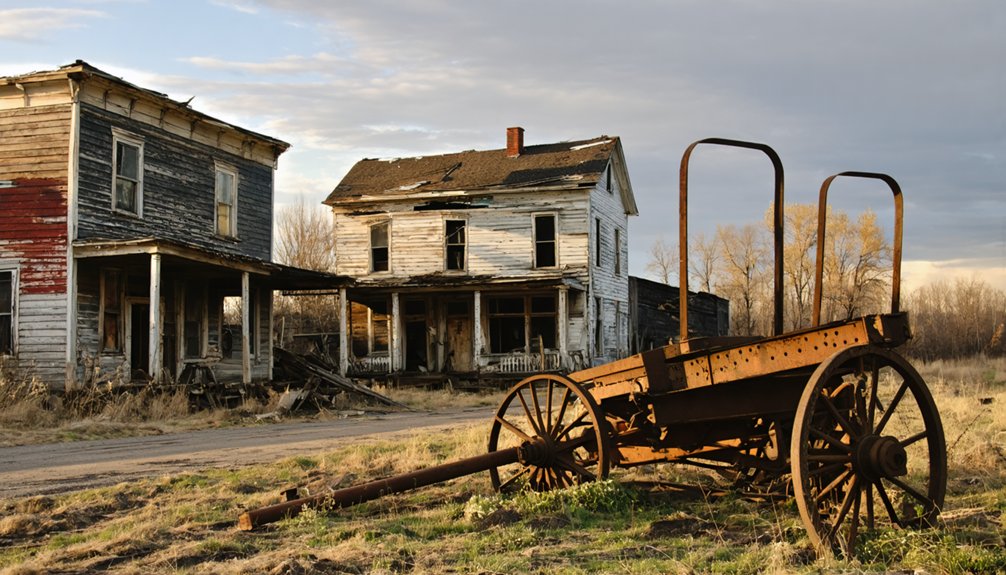
Life in a 19th-century mining town revolved entirely around the demanding coal industry, where miners descended 200 feet or more into pitch-black tunnels before dawn each day.
You’d find yourself starting work by 7:00 AM, tackling dangerous tasks like cutting, drilling, and blasting in cramped underground chambers while facing constant mining hazards from cave-ins to toxic gases.
Your home would’ve been a basic company-provided dwelling in a crowded neighborhood plagued by poor sanitation.
The community struggles were real – you’d shop at the company store on credit, creating cycles of debt.
After grueling shifts, you might join other miners at the local saloon, where drinking and gambling offered brief escape.
Your ethnic background would determine your social circles in these diverse boomtowns, where immigrants from across Europe formed tight-knit groups.
The Beginning of the End
By the late 1870s, the once-thriving coal mining settlement of Stachnikville began its irreversible descent into abandonment.
As the coal industry declined, you’d have witnessed mounting economic challenges that tested the community’s resilience. Despite discovering an underground spring that briefly sparked hope, Stachnikville couldn’t escape its fate.
The town’s decline manifested in several critical ways:
- Widespread poverty gripped families as mining jobs disappeared.
- Limited healthcare access led to increasing illness among residents.
- Neighboring towns drew away workers with better opportunities.
- Property values plummeted as buildings fell into disrepair.
Families who’d spent generations in Stachnikville were forced to seek prosperity elsewhere, leaving behind their homes and community bonds.
The town’s transformation from bustling settlement to abandoned ghost town had begun.
From Bustling Town to Abandonment
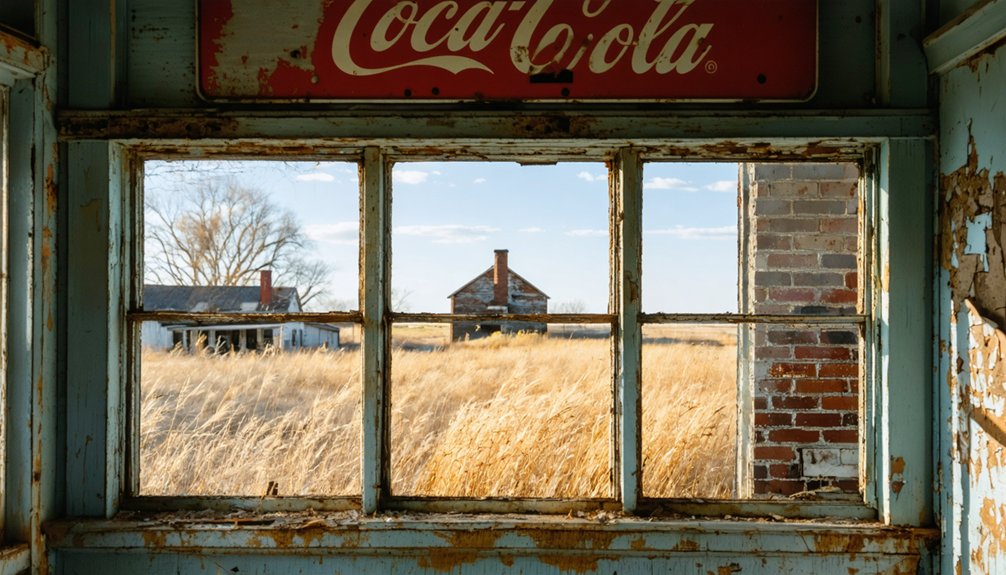
If you’d visited Stachnikville during its 1873 peak, you’d have found a thriving coal town built on the promise of mining prosperity.
The town’s fortunes changed dramatically in the late 19th century when the coal industry’s downturn triggered widespread poverty and illness among mining families.
The resulting mass exodus saw residents abandon their homes for better opportunities in surrounding communities, leaving behind deteriorating structures that would eventually give way to farmland.
Mining Boom Then Bust
When coal was discovered near Stachnikville in 1856, the small settlement quickly transformed into a bustling mining town.
The economic cycles of coal mining brought both prosperity and hardship to residents over several decades. You’ll find that Stachnikville reached its peak in 1873, when coal demand drove significant growth and development.
The town’s boom-to-bust trajectory followed these key phases:
- Initial hand-dug mining using “room and pillar” methods established the town’s economic foundation.
- Peak production in 1873 brought wealth and steady employment to local families.
- Mechanization in the early 1900s reduced manual labor needs, leading to unemployment.
- Depletion of accessible coal seams and falling prices ultimately forced residents to seek opportunities elsewhere.
Population Mass Exodus
The decline of Stachnikville’s coal industry triggered a devastating population exodus that would transform the once-thriving town into little more than a memory. You would’ve witnessed families departing en masse to neighboring towns, seeking better economic prospects as mining conditions deteriorated. This economic migration accelerated through the late 1800s, with poverty and illness hastening residents’ decisions to leave.
As people fled, you’d have seen the town’s social fabric unravel. The social fragmentation was evident as schools closed, shops shuttered, and community institutions vanished. Buildings were dismantled for materials, with some reconstructed in other towns.
Those who remained faced extreme hardship until they too departed, leaving behind only scattered remnants like the Hillman Street Barn to mark where a bustling community once stood.
What Remains Today
Standing as a solitary sentinel of Stachnikville’s past, Hillman Street Barn remains the only surviving structure in this former Illinois coal mining town.
Today, you’ll find most of the original townsite has returned to agricultural landscape, with the sturdy barn serving as the last physical connection to the settlement’s 19th-century origins.
When visiting the site today, you’ll discover:
- Year-round accessibility via standard vehicle
- Level terrain where buildings once stood, now transformed into farmland
- The preserved Hillman Barn, maintaining its position on the historic Hillman Street
- Open spaces that tell the story of a once-thriving coal mining community
While no formal preservation efforts protect the site, you’re free to explore this piece of Illinois history at your convenience, experiencing firsthand the remnants of this ghost town’s legacy.
Legacy of a Lost Mining Community
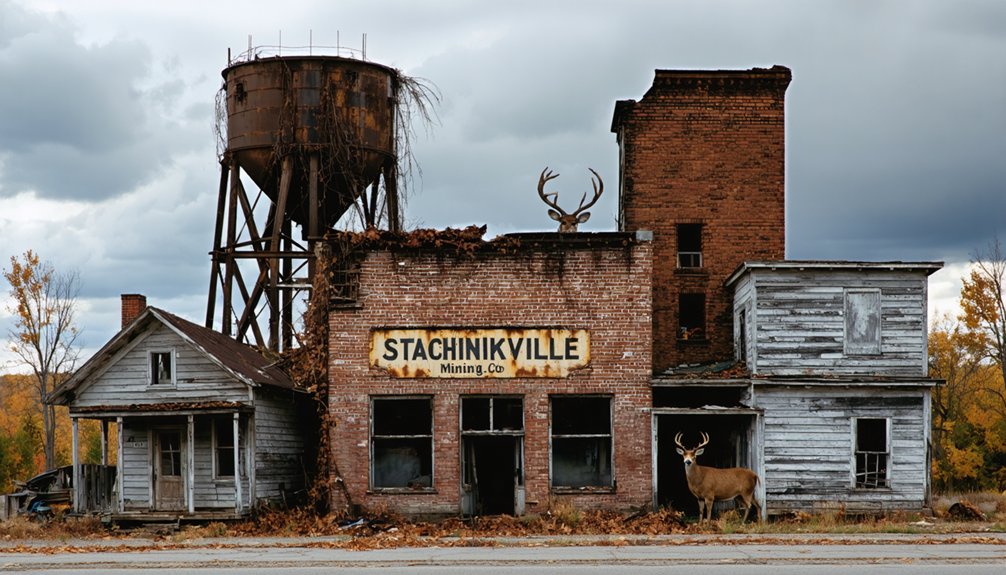
Once a bustling hub of Illinois coal production, Stachnikville exemplified both the rise and fall of 19th-century mining communities across the state.
Despite the hardships miners faced, including poverty and dangerous working conditions, their community resilience shone through in tight-knit social bonds that defined life in these small mining towns.
You’ll find Stachnikville’s cultural heritage woven into the broader tapestry of Illinois mining history, from the “room and pillar” mining techniques to the shared experiences of mining families who shaped the region.
Though the town couldn’t survive the coal industry’s decline, its legacy lives on in the patterns of labor migration and industrial development that transformed rural Illinois.
Today, while farmland covers the former townsite, Stachnikville’s story reminds you of the profound impact mining communities had on America’s industrial growth.
Preserving Stachnikville’s Memory
Modern efforts to preserve Stachnikville’s memory face significant challenges, given its remote valley location and limited remaining structures.
You’ll find that community involvement and historical documentation are essential to maintaining this piece of Illinois’ coal mining heritage.
Local historical societies have identified four key preservation strategies:
- Creating a digital archive of remaining photographs, documents, and oral histories
- Establishing educational programs in Tazewell County schools to teach local mining history
- Organizing annual community events that celebrate Stachnikville’s cultural significance
- Developing archaeological surveys to document and protect remaining site features
You can support these preservation efforts by participating in volunteer programs, sharing family histories, or contributing to local historical society initiatives.
Every piece of information helps reconstruct the story of this once-thriving mining community.
Frequently Asked Questions
Were There Any Notable Accidents or Disasters in Stachnikville’s Mines?
Like a book with missing pages, you won’t find specific disaster records from Stachnikville’s mines. While mine safety was likely poor, no notable accidents are documented in historical records.
What Happened to the Mining Equipment After the Town Was Abandoned?
You’d find no clear records of mining machinery disposition in this case, though it’s likely equipment was either abandoned in place or subject to informal equipment salvage operations by locals.
Are There Any Surviving Photographs of Stachnikville During Its Peak Years?
Like a whisper lost in time, you won’t find any surviving photographs from Stachnikville’s peak years in historical archives or vintage postcards, despite extensive searches through public collections.
Did Any Famous People or Historical Figures Ever Visit Stachnikville?
You won’t find any records of famous visitors to this once-active mining town. Despite its historical significance in local coal production, no notable historical figures are documented visiting here.
What Was the Exact Population of Stachnikville at Its Height?
You can’t know the exact population demographics at Stachnikville’s peak in 1873, as no official records survive. While the mining industry supported the town, historical sources don’t provide specific population figures.
References
- https://drloihjournal.blogspot.com/2022/09/lost-towns-of-illinois-stachnikville.html
- https://www.youtube.com/watch?v=anFCnaFkH9A
- https://www.youtube.com/watch?v=93k0qtvzkn4&vl=en-US
- http://cantontornado36.blogspot.com/2017/04/ghost-towns-of-fulton-county-illinois.html
- https://www.ghosttowns.com/states/il/stachnikville.html
- https://www.youtube.com/watch?v=rNSjcGsONhM
- https://drloihjournal.blogspot.com/search/label/Lost Towns of Illinois
- https://en.wikipedia.org/wiki/List_of_ghost_towns_in_Illinois
- https://www.coalvalleyil.org/about/our-history/
- http://www.illinoislaborhistory.org/labor-history-articles/early-days-of-coal-mining-in-northern-illinois
